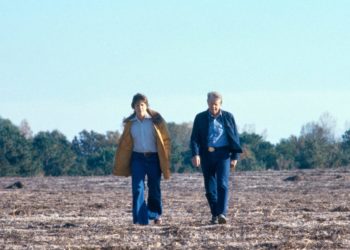BOOK OF LIVES: A Memoir of Sorts, by Margaret Atwood
Margaret Atwood’s memoir, “Book of Lives,” is long, nearly 600 pages, and it doesn’t sit lightly on the lap. It’s a largely shapeless narrative spanning the entire life of Canada’s pre-eminent novelist, and it contains a good deal of passive voice (about a lost stuffed animal: “Loss was experienced. Guilt was felt. Mourning took place”). It frequently reads like a Politburo speech, in the sense that it takes its audience for granted.
Its colors deepen, however, when two topics are visible, topics that overlap like the circles in a Venn diagram. The first, mostly sunnier, subject is nature, in which Atwood seems freest and happiest and most alive. The second is her abiding interest in her own dark side — “I am a sulker and brooder” — and in tarot cards, palm readings, exorcisms, ghost sightings and horoscopes. She prints her birth chart and comments: “We Scorpios make implacable enemies.” This book, more than most literary memoirs, is a vessel of wrath — and wrath is interesting.
“I have a strain of nemesism,” Iris Murdoch wrote in a 1945 letter, coining a term derived from the word “nemesis.” Atwood toys with the nemesism in herself. Among this book’s epigraphs is one supplied by a friend: “Don’t piss her off, or you will live forever.”
Atwood’s father was an entomologist and a woodsman who moved his family around in rural northern Quebec. On the run from encroaching civilization, he liked to construct new and more remote cabins and houses while everyone slept in nearby tents. His was a gospel of self-reliance. The family wasn’t poor, but it often got along without electricity and running water. The Atwoods were excellent skaters, sledders and tobogganers.
Born in 1939, Margaret, like her mother, was a tomboy. She didn’t get Add-A-Pearl necklaces for her birthday; she got metal waterproof match boxes and well-made belt knives. During a summer job as a camp counselor, she picked up the nickname Peggy Nature. (Atwood went by Peggy until she became a writer and felt that, as a byline, it lacked gravitas.)
She went to the University of Toronto and then to Radcliffe, where she got a master’s degree in Victorian literature. “Book of Lives” takes us through the rise of Atwood’s career, the early novels — “The Edible Woman” (1969), “Surfacing” (1972), “Lady Oracle” (1976) — that paralleled the increasing embrace of Canadian literature on the world stage.
The Peggy Nature in Atwood was revived, after time in urban Toronto, when she met the man who would become her second husband. Graeme Gibson was a big, funny, gregarious and politically aware novelist, the sort of man who cooked enormous and ambitious meals and tried to teach his parrot to say, “What about the workers?” They sealed their love on a canoe trip. Theirs was an intense relationship.
Atwood and Gibson moved to a farm near Alliston, Ontario, and made a real go at agrarian living. It’s a treat to read about their rustication. The comedian in Atwood is on display. They raised a daughter, Jess, and kept ducks, sheep, cows, bees and an expansive garden. The farm was home to many dogs, including one that peed itself if told “no,” and a cat that went along with Atwood on walks as if it were a dog.
The couple grew alfalfa. They made sauerkraut, wine and beer: Many stinky bottles exploded. They froze things, canned them and made fruit leather. They had a rooster who “died of rage.” They become peripatetic bird watchers. They accidentally threw a lot of fresh liver onto the kitchen ceiling in front of a man who wanted to write Atwood’s biography. They had to put down a ram that attacked people. Atwood writes: “Did I shed tears? Yes. But I ate the chops.”
The early farm years were overshadowed by the ire of Gibson’s previous wife, who felt that Atwood had destroyed their relationship. Atwood writes, “this wife has been spreading malicious lies about me.” That their farmhouse is haunted by a woman in a blue dress, whom they attempt to appease by leaving food out, seems less of a problem.
The publication of Atwood’s era-defining dystopian novel “The Handmaid’s Tale” (1985), about a society in which women are state property, consolidated her power as a writer and drew a line under her deep-seated interests in gender, patriarchy and power. It made her famous, though its renown, she writes, “was incremental.”
She became addicted to her work and went on to publish more than 60 books of fiction, nonfiction and poetry. She traveled widely, enjoyed her fame and saw that fame redouble when “The Handmaid’s Tale” became a popular and critically admired television series. The show began airing in 2017, less than a year after Donald J. Trump’s election. Its timing underscored the novel’s prophetic charge and terrifying parallels.
Atwood, 85, is charmed by her own dark side; she has trained it, like a series of vines, around her persona. She’s aware that her Medusa’s head of curls add to the effect. She was often shamed about them when young but grew to prize them. When she finds ringlets she cut and saved long ago, she describes them as “malevolent, like the key ingredient in a diabolic charm.”
She enjoys being forbidding, especially with feckless interviewers. She is only half kidding when she writes, “One glance from my baleful eyes and strong men weep, clutching their groins, lest I freeze their gonads to stone.”
When she was young, a group of close girlfriends turned on Atwood. It was a pivotal moment, a creation scene: “I had been given the role of the monster.” She decided she did not entirely mind. The realization that you can’t trust anyone might have made her a detective or a con artist, she writes, “or a blend of the two: You might become a novelist.”
Some scores are settled directly in “Book of Lives.” It’s more unnerving (and thrilling) when she doesn’t name names and delivers lines like: “I know who you are, or were, male person,” or, to a man who spiked her drink and another who groped her:
I know your names, but won’t mention them here because it was a long time ago and anyway you are probably dead. But if you’ve ever wondered why you’ve had so much bad luck in life, it was the curse of the White Goddess. Just saying.
Gabriel García Márquez wouldn’t stay in a house if someone had died in it. Colette practiced dowsing. Milan Kundera cared about his star sign. Atwood isn’t alone in her interest, literary and otherwise, in the metaphysical and supernatural, and in old, dark folk ways.
These concerns have added enormously to her symbol-making powers. What resembles insanity to some, she suggests, has helped keep her sane. As Offred, the narrator of “The Handmaid’s Tale” puts it: “Sanity is a valuable possession; I hoard it the way people once hoarded money. I save it, so I will have enough, when the time comes.”
BOOK OF LIVES: A Memoir of Sorts | By Margaret Atwood | Doubleday | 599 pp. | $35
Dwight Garner has been a book critic for The Times since 2008, and before that was an editor at the Book Review for a decade.
The post Margaret Atwood Leans Into Her Dark Side in a New Memoir appeared first on New York Times.




